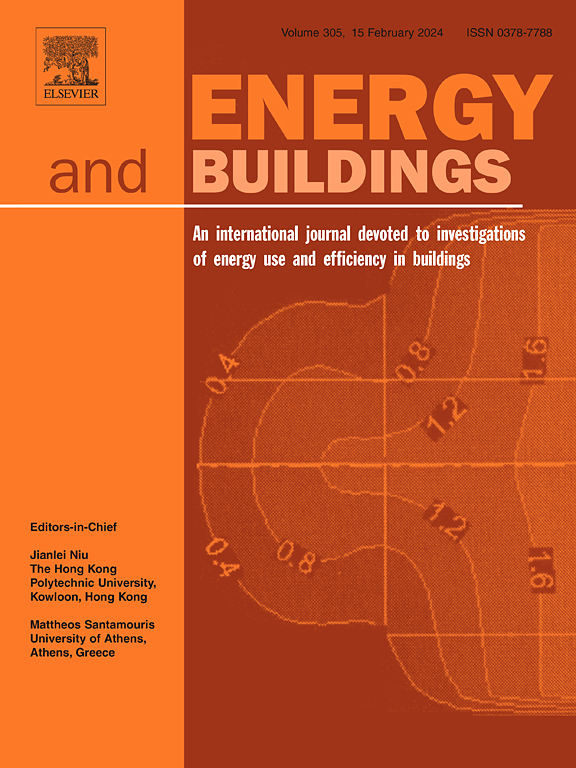A knowledge graph-based framework to automate the generation of building energy models using geometric relation checking and HVAC topology establishment
IF 6.6
2区 工程技术
Q1 CONSTRUCTION & BUILDING TECHNOLOGY
引用次数: 0
Abstract
Building Energy Models (BEM) are widely utilized throughout all stages of a building's lifecycle to understand and enhance energy usage. However, creating these models demands significant effort, particularly for larger buildings or those with complex HVAC systems. While a substantial amount of information can be extracted from Building Information Models (BIM) — which are increasingly accessible and provide necessary data for geometric and HVAC contexts — this information is not readily usable in setting up BEM and typically requires manual translation. To address this challenge, this paper introduces a BIM-to-BEM (BIM2BEM) framework that focuses on automating the generation of HVAC parts of BEM models from BIM data. Core to the methodology is the extraction of HVAC system topologies from the BIM model and the creation of a knowledge graph with the HVAC topology. The topology transformation unfolds in three key stages: first, a geometry-induced knowledge graph is established by examining the geometric relationships among HVAC elements; second, this graph is converted into an informative HVAC topology with enhanced properties from additional data sources; and finally, the informative topology is simplified into a BEM-oriented HVAC topology compliant with BEM platforms such as EnergyPlus. A case study of a large university building with a complex HVAC system showcases that the proposed framework achieves automatic and precise generation of building performance simulation models. The model's predictions are then validated against actual measurements from the building.
基于知识图谱的框架,利用几何关系检查和暖通空调拓扑建立自动生成建筑能源模型
建筑能源模型(BEM)被广泛应用于建筑生命周期的各个阶段,以了解和提高能源利用率。然而,创建这些模型需要耗费大量精力,尤其是对于大型建筑或具有复杂暖通空调系统的建筑而言。虽然可以从建筑信息模型(BIM)中提取大量信息(BIM 越来越容易获取,并提供了几何和暖通空调方面的必要数据),但这些信息并不能随时用于建立 BEM,通常需要手动翻译。为了应对这一挑战,本文介绍了一个 BIM 到 BEM(BIM2BEM)框架,该框架侧重于从 BIM 数据自动生成 BEM 模型的暖通空调部分。该方法的核心是从 BIM 模型中提取暖通空调系统拓扑结构,并创建包含暖通空调拓扑结构的知识图谱。拓扑转换分为三个关键阶段:首先,通过检查暖通空调元件之间的几何关系,建立一个由几何引发的知识图谱;其次,将该图谱转换为信息型暖通空调拓扑,并通过附加数据源增强属性;最后,将信息型拓扑简化为符合 BEM 平台(如 EnergyPlus)的面向 BEM 的暖通空调拓扑。通过对一栋大型大学建筑复杂的暖通空调系统进行案例研究,可以看出所提出的框架能够自动、精确地生成建筑性能模拟模型。然后,模型的预测结果将根据建筑物的实际测量结果进行验证。
本文章由计算机程序翻译,如有差异,请以英文原文为准。
求助全文
约1分钟内获得全文
求助全文
来源期刊

Energy and Buildings
工程技术-工程:土木
CiteScore
12.70
自引率
11.90%
发文量
863
审稿时长
38 days
期刊介绍:
An international journal devoted to investigations of energy use and efficiency in buildings
Energy and Buildings is an international journal publishing articles with explicit links to energy use in buildings. The aim is to present new research results, and new proven practice aimed at reducing the energy needs of a building and improving indoor environment quality.
 求助内容:
求助内容: 应助结果提醒方式:
应助结果提醒方式:


